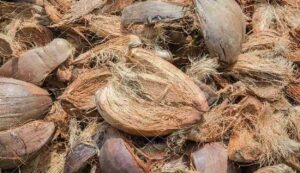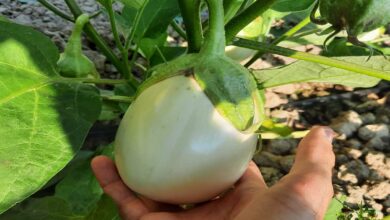Coconut shell fertilizer is very beneficial for plants and trees, know the method of making it
Coconut Peel Fertilizer: In the fields, organic manure derived from coconut shells is showing great benefits. This organic manure may be made in a fantastic and natural way. One natural cure that is useful for improving the quality of soil in fields and supporting plant development is manure prepared from coconut shells. The soil is stabilized by the many nutrients and beneficial metals found in coconut shells.

Learn how coconut shells can be converted into organic fertilizer:
Every portion of the coconut has health benefits.
Most people utilize ripe coconuts for eating or for worship, and they may be found in almost every home in the nation. Almost every portion of the coconut fruit is said to have several health benefits. Coconut is mostly utilized in India to manufacture pulp, water, and cream. The majority of people discard coconut shells because they believe they are worthless, but did you know that there are several uses for the peel?
Advantageous to plants
Plants are said to benefit greatly from fertilizer prepared from coconut shells. Numerous minerals found in coconut shells, such as potassium, nitrogen, phosphorus, copper, and zinc, are good for soil quality, plant nutrition, and plant development. Not only may coconut shell fertilizer be used on plants, but it can also be utilized to keep the ground healthy. Tell us how coconut shells may be used to make organic fertilizer.
How can coconut shells be used to generate fertilizer?
Coconut shells must first be broken up finely or ground into a powder in a mixer in order to be used as organic fertilizer. You must now fill it with water and leave it. The coconut shell will then begin to decompose. The coconut shells should then be left in the sun until they begin to turn black. You should apply the coconut shell manure to plant soil as soon as the fibers begin to emerge. This organic manure must be put into the soil in accordance with the field’s requirements.





